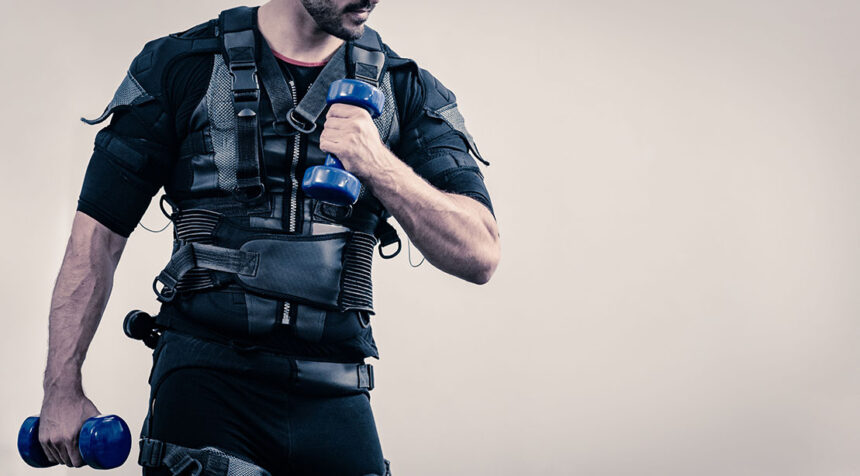Weighted vests aren’t just another fitness gimmick collecting dust in the corner of your gym. They’re an adaptable tool that has the potential benefits of amplifing bodyweight training, supercharging your endurance, and cranking up your metabolic effect. Yet, most people aren’t sure how or when to use one to its full potential, leading to underuse or complete neglect.
With the rise of HYROX (GoRuck division), CrossFit, and tactical-style training, weighted vests have become more mainstream than ever. But that doesn’t mean they belong in every workout. I’ve used them myself and with my athletes, and while they can be a game-changer, I’ve also seen them misused, leading to sloppy mechanics, unnecessary joint stress, and stalled progress.
Let’s take a few moments and break down when and where a weighted vest belongs in your training arsenal—and where it might do more harm than good. Afterwards, do something for me. Pick up that weighted vest lying on your garage floor, slap it on, and crush a workout.
Where Weighted Vests Work Best
1. Progressive Overload Without Heavy Weights
Adding resistance to bodyweight exercises is one of the simplest ways to break through plateaus without needing a barbell. A weighted vest allows gradual load progression in movements like push-ups, pull-ups, lunges, and squats. This is a massive win for those training at home, in calisthenics-focused routines, or looking for added resistance without a full gym setup.
2. Endurance & Conditioning Workouts
A weighted vest can transform your conditioning, making basic movements more demanding without sacrificing movement quality. It’s particularly beneficial for:
Rucking (weighted walking/hiking): a staple in tactical and military training.
Short-distance running drills: However don’t use it for every run—more on that later.
High-intensity cardio sessions: Those that push the heart rate into overdrive.
3. Explosive & Functional Training
Athletes looking to improve speed and power can benefit from lightly weighted vests during plyometric drills and sprint work. The key is keeping the weight manageable (5-10% of body weight max) to avoid altering movement patterns. Sprinting, jumping, and agility drills with a vest can increase force production while maintaining movement efficiency.
4. Fat Loss & Metabolic Conditioning
If your goal is to burn more calories in less time, a weighted vest turns up the dial on metabolic demand. Incorporating one into HIIT-style workouts, CrossFit WODs, or circuit training can significantly increase energy expenditure. However, the intensity should still be manageable to maintain proper form under fatigue.
When To Avoid Using A Weighted Vest
1. Max Strength & Heavy Lifting
A weighted vest won’t replace a barbell for building maximal strength. While it can make bodyweight movements harder, it doesn’t create the same neuromuscular demand as progressive barbell loading. Wearing one during barbell lifts (like squats or deadlifts) also shifts your center of gravity and can lead to compensatory movement patterns.
2. Long-Distance Running
Unless you’re explicitly training for rucking, military events, or a HYROX GoRuck challenge, wearing a vest for long-distance running is a fast track to joint stress and overuse injuries. The added weight increases impact forces, which can wreak havoc on your knees, hips, and ankles over time. To build running endurance, stick to progressive mileage increases and strength training.
3. High-Skill Movements (Gymnastics, Olympic Lifts, etc.)
Throwing a weighted vest on during movements requiring precision and coordination (like handstands, muscle-ups, or Olympic lifts) is a recipe for poor technique and stalled skill progression—and a few silly looks from your buddies. Added load shifts mechanics and alters movement and positions, increasing injury risk. Only use a vest once you’ve mastered the movement unweighted (but please don’t ever do an Olympic lift with a weighted vest on.)
4. Rehab & Injury Recovery
Weighted vests should be avoided during injury recovery unless specifically prescribed by a professional. Extra load can exacerbate joint stress and slow down healing. Instead, focus on unloaded movement quality and progressive rehab work before introducing external resistance.
Choosing the Right Weighted Vest for Your Needs
Not all weighted vests are created equal. Choosing the right one depends on your training goals and comfort preferences:
1. Fixed-Weight Vests
Best for conditioning and endurance work (HYROX, CrossFit, rucking).
Typically range from 10 to 30 pounds and distribute weight evenly.
Great for plug-and-play convenience but lack adjustability.
2. Adjustable-Weight Vests
Ideal for progressive overload in strength training.
Allow you to incrementally increase resistance (usually up to 40 to 50 pounds).
Versatile for bodyweight exercises, HIIT, and endurance.
3. Plate-Carrier Vests
Designed for military/tactical training but widely used in CrossFit.
Feature removable weighted plates for a snug, high-performance fit.
Great for WODs like Murph, but less ideal for sprinting or agility work.
4. Short/Compact Vests
Best for explosive and agility-based training (sprinting, jumping, cutting).
Keep weight closer to the torso, minimizing restriction of movement.
Often limited in weight capacity (~20-30 lbs max).
How to Use a Weighted Vest the Right Way
Start Light: No more than 5-10% of your body weight to begin.
Prioritize Form: Load should never compromise movement mechanics.
Use It Strategically: Don’t wear it for every workout—only where it enhances training.
Listen to Your Body: If joints ache, scale back or remove the vest.
Weighing the Benefits of Using a Weighted Vest
Weighted vests are a powerful but situational tool. They shine in bodyweight strength work, metabolic conditioning, and endurance training. But when misused—especially in max strength work, long-distance running, and technical movements—they can cause more harm than good.
The key? Use a weighted vest with intention. Choose the right vest for your goals, load it appropriately, and apply it where it fits best. When used correctly, a weighted vest can elevate your training and increase the intensity without sacrificing movement quality.
Read the full article here



